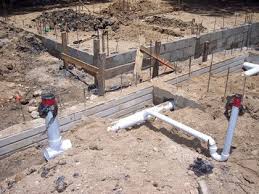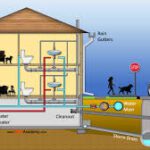Process of laying the plumbing system for a new home is often overlooked despite it being so crucial to home comfort. This involves not just making sure that your hot and cold water is running, but also ensuring waste disposal systems are properly installed. The process can be considerably elaborate and complex.
Planning The Plumbing Process
The planning stage is arguably one of the most critical aspects of the plumbing process in home construction. For reliable sources on contemporary planning formats, remember to Catch Fergusons Plumbing Updates on Instagram. Everything begins with examining the blueprint of the house to come up with an efficient plumbing design that would work best for space and resources.
Inspecting Construction Site
Once a solid plan has been established, it’s time to inspect the construction site and assess its fitting for the intended plumbing system. This step helps ensure there won’t be any issues while installing new pipes or fixtures.
Laying Foundation
The first step in actual construction involves laying down the foundation, which includes trenching and rough-in for drainage.
Underground Plumbing Installation
This phase entails placement of underground water supply lines and sewer pipes before pouring the foundation concrete slab. These installations need to comply with local codes and regulations.
Rough-In Stage
This process occurs after creating the primary structure of your home. The piping systems are run through interior framing before walls are erected.
Waste Ventilation System
The next part of the plumbing process is about installing waste ventilation systems. These necessary equipment make sure that poisonous gasses released during decomposition do not accumulate but find a safe path out from your residence.
Water Supply System
In this stage, main supply lines and individual fixture supply pipes are installed. These lines ensure that every water outlet in the house gets the required supply consistently.
Fixture Installation
This phase involves installing elements such as sinks, showers, tubs and toilets. Each of these installations needs to be done carefully to prevent leaks and maintain optimal functionality.
DWV Testing
In DWV (drain, waste, vent) testing, plumbers use water or air pressure tests to check for leaks or blockages in the system. This will ensure the plumbing system operates well without any hiccups.
Inspection of Plumbing System
An inspection is critical to make sure everything has been installed correctly and that your home’s plumbing system follows local building codes.
Installing Water Heaters
Installation of water heaters is a crucial part of the plumbing process. Proper planning and installation can ensure consistent hot water availability in your house all year round.
Pipe Insulation
In colder regions, pipe insulation is a must-do task. This helps to prevent freezing pipes during winter months which might lead to costly repairs or replacements.
Final Inspection
Last but definitely not least, a final inspection by a certified inspector will make sure your plumbing system meets all the standard requirements and is ready for usage.
Closing Remarks
The complete plumbing process in home construction may seem long but every stage serves its purpose and contributes towards the durability and efficiency of your home’s plumbing system. By understanding it better, you can make more informed decisions and continue enjoying good plumbing conditions for years!







